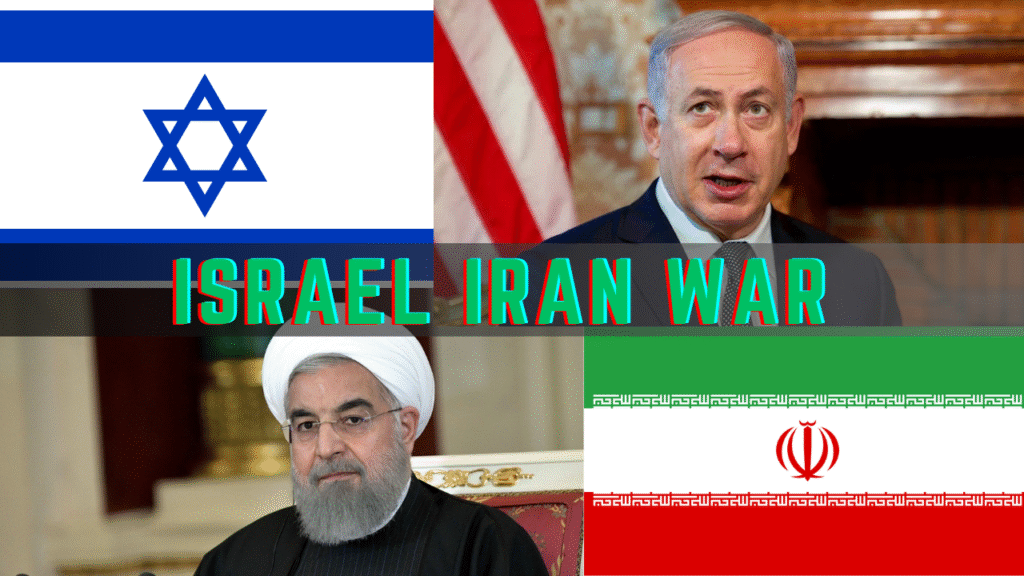The Israel-Iran war stands out as one of the most intense and volatile power struggles in the Middle East. Rooted in deep political, ideological, and strategic differences, this ongoing conflict has far-reaching consequences that extend beyond the borders of the two countries. While Israel and Iran have never fought a direct war, their rivalry plays out through proxy wars, cyberattacks, military strikes, espionage, and intense diplomatic confrontation. As the rivalry continues to evolve, it significantly shapes regional politics, disturbs peace initiatives, and invites involvement from global powers.
Origins and Causes of the Israel-Iran War
The Israel-Iran conflict has historical, religious, and political dimensions. Before the 1979 Iranian Revolution, Israel and Iran had relatively neutral diplomatic ties. However, post-revolution, Iran adopted a staunchly anti-Israel position, calling for the elimination of the Israeli state. Iran’s support for militant groups such as Hezbollah in Lebanon, Hamas in Gaza, and Islamic Jihad is a direct challenge to Israel’s national security.
On the other hand, Israel views Iran’s nuclear ambitions, military buildup, and regional influence as existential threats. The ideological differences are stark: Iran sees itself as the leader of the Shia Islamic resistance against Western influence and Zionism, while Israel positions itself as the sole democratic ally of the West in the Middle East.
Key Elements of Israel-Iran War
1. Proxy Wars Across the Region
One of the defining features of the Israel-Iran conflict is the use of proxy warfare. Iran funds and arms groups like Hezbollah in Lebanon, the Houthis in Yemen, and various Shia militias in Iraq and Syria. In response, Israel regularly conducts airstrikes in Syria to counter Iranian entrenchment and arms smuggling.
2. Cyber Warfare
Cyber operations have become another battleground. Iran has been linked to attacks on Israeli water systems and infrastructure, while Israel is suspected of launching malware like Stuxnet, which disrupted Iran’s nuclear centrifuges.
3. Nuclear Tensions
Iran’s nuclear program is a central concern for Israel. While Iran claims it is for peaceful purposes, Israel and many in the international community suspect the development of nuclear weapons. Israel has consistently opposed the Iran Nuclear Deal (JCPOA), fearing it is insufficient to curb Iran’s ambitions.
How the Israel-Iran War Impacts the Middle East
The rivalry between Israel and Iran has had profound consequences across the Middle East, many of which are long-term and deeply destabilizing:
1. Prolonged Proxy Conflicts
Countries like Syria, Lebanon, Iraq, and Yemen have become battlefields where Iran and Israel exert influence through militias and counter-operations. This has led to prolonged violence, weakened governments, and increased civilian casualties.
2. Arms Race and Military Escalation
The region is witnessing an arms buildup, as both Israel and Iran enhance their missile defense systems, drones, and offensive capabilities. This escalation creates an environment of permanent tension, where even small incidents can spiral into larger confrontations.
3. Disruption of Peace Efforts
Iran’s opposition to normalization deals between Israel and Arab states—such as the Abraham Accords—has disrupted peace talks. Tehran views these agreements as betrayals by Sunni states and threatens retaliation, complicating diplomatic efforts in the region.
4. Sectarian Tensions
The rivalry also deepens Sunni-Shia divides. Iran, a Shia-majority country, backs Shia militias, while Sunni-majority nations like Saudi Arabia are increasingly aligning with Israel, further polarizing the region and increasing sectarian violence.
5. Humanitarian Crises
Civilian populations are the biggest victims. Proxy wars, military strikes, and economic sanctions contribute to displacement, poverty, and hunger, especially in conflict zones like Syria and Yemen. Refugee crises spill into neighboring countries, putting additional strain on regional resources.
6. Economic Disruptions due to Israel-Iran War
Tensions impact global oil prices and trade routes, particularly in the Strait of Hormuz—a key chokepoint for global oil supply. Regional instability can spook markets, disrupt supply chains, and increase transportation costs.
7. Involvement of Global Powers
The United States, Russia, and China are all involved either directly or indirectly. The U.S. backs Israel and enforces sanctions on Iran, while Russia and China have increased diplomatic and military ties with Tehran. This involvement globalizes the conflict, making it harder to resolve.
8. Polarization in the Arab World
Middle Eastern countries are under pressure to take sides, creating a fractured regional landscape. Countries like Saudi Arabia, the UAE, and Bahrain align closer with Israel, while Iraq, Syria, and Lebanon remain under Iranian influence.
Future Outlook of the Israel-Iran War
The future of the Israel-Iran rivalry remains highly unpredictable. While both nations are currently avoiding direct war, the risk of escalation remains high due to:
- Continued Israeli airstrikes on Iranian assets in Syria.
- Iran’s potential resumption of its nuclear program beyond peaceful limits.
- Attacks by Iranian-backed groups on Israeli or Western targets.
- Political shifts within Iran and Israel, especially with hardliners gaining influence.
However, diplomatic openings are still possible. International negotiations on nuclear issues, backchannel diplomacy, and broader regional agreements could potentially reduce tensions. Initiatives like the JCPOA revival or expanded Arab-Israeli cooperation might offer a framework for de-escalation.
But without genuine political will, the rivalry may persist or even worsen, especially if one side perceives the other as significantly enhancing its power or influence.
Conclusion
The Israel-Iran geopolitical rivalry is one of the most significant sources of instability, violence, and geopolitical tension in the Middle East. With roots in ideology, security concerns, and strategic ambition, the conflict has evolved into a multi-layered confrontation affecting countries far beyond its primary actors.
Its impact on regional stability, humanitarian conditions, sectarian dynamics, and global politics cannot be overstated. While the future remains uncertain, understanding the scope, nature, and implications of this rivalry is critical for analysts, policymakers, and global citizens alike.
For more information read our other Blogs.




